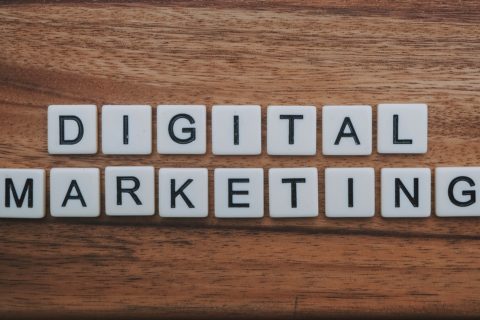Overview
For years, there has been a widespread shift in audience engagement from offline to digitally centred engagement. With the coronavirus outbreak, the shift is much more obvious. From how we purchase for essentials like food to how, when, and where we work, everything has changed. Almost every element of our life have been altering day by day by the epidemic. It’s also changing how many companies connect with their customers and prospects. Many business owners have been force to reassess their marketing strategy after widespread lockdowns and other restrictions. As a result, digital marketing has exploded. It’s clear to understand why! The number of people who spend time online is increasing. Work-from-home habits, increased internet purchasing, and a general aversion to public spaces have all contributed to this trend.
It should come as no surprise that the outbreak has had a commercial impact. However, many companies have done little or nothing to alter their digital marketing strategy as a result.
The COVID-19 Epidemic’s Impact on Digital Marketing
Companies must make adjustments to their marketing execution in response to any change in consumer behaviour. The COVID-19 pandemic has sparked a number of major digital marketing developments, including:
Honesty and openness in advertising: As people look to digital platforms to help them manage the pandemic, honesty and openness are more important than ever. Indeed, Facebook claims to have taken down more than seven million ads containing incorrect material on the coronavirus. Due to false advertising during the pandemic, there have been numerous reports of goods being paid for but never arriving. Customers are taking more risks with firms and brands they don’t know since products aren’t available through their usual channels, and they need to know they’re getting what they paid for.
Marketing communications have always piqued people’s interest. It’s no secret that many corporations inflate their financial figures. These days, truth and trust in advertising are more crucial than ever. Now, and moving ahead in your marketing approach, focus on creating trust with your audience. Keep in mind what you’re promising and promote yourself honestly. In this way we can build trust and have a better online presence. This can also help you to build better relationships with your customers. Customers are our utmost and ultimate goal. By the end we look for them.
A focus on both the product and the service:
The approach of “build it and they will come” is working nicely these days. Nowadays, face masks, hand sanitizers, and even cleaning supplies are frequently seen in apparel stores and other unexpected places. In many ways, successful marketing has been as simple as maintaining a good stock of things that customers require, especially as larger merchants’ shelves have been cleaned of vital commodities. However, this does not imply that excellent customer service has taken a second seat. Customer service has primarily focused on satisfying new customer demands and expectations during the epidemic, even if this appears to be outside of the traditional paradigm.
Given the particular circumstances of the pandemic, service has taken on a new meaning: concern for client safety. Many marketers are changing their messaging to incorporate reminders about masks, social distance requirements, as well as safety and cleanliness, as well as how they’re helping to ensure consumer health and safety.
Companies should use these new capabilities and functions into their digital marketing messaging. Aligning yourself with your customers’ goals and interests helps to keep them engaged and builds brand trust. It also shows that you care about their best interests. This is a fantastic way to earn loyalty once the pandemic is over. They’ll see you as someone who is aware of changing client needs and is willing to go above and beyond to provide a positive experience.
Fresh Content:
In February 2020, stock pictures and creative graphics showed what we may go through everyday life.However, in a few months, media depicting people will significantly change to feature people wearing masks. To underline the “No Mask, No Ride” rule, Uber commercials feature clients wearing masks. During the pandemic, restaurants, travel agencies, and even amusement parks all altered their image to be more in the moment.
Digital marketers should assess their content libraries and look for methods to fit their graphics with the current context. Social distancing, mask-wearing, health and hygiene, and so on can be substituted for creative designs that involve people. Images and video content used in social media, blog posts, email marketing, landing sites, and lead magnets are among the digital marketing resources to analyse.
Higher Traffic Volume and a Lower CPC:
Many marketers were compelled to pull their digital ad efforts towards the start of the epidemic due to the need to temporarily close their doors or a major loss in revenue. The cost of digital advertising has dropped dramatically as a result of the unexpected decline in ad revenue for companies like Google and Facebook, decreasing the barrier to entry for businesses looking to employ sponsored ads to generate new business.
Increased reach is the other side of the same coin. Individual unemployment, time spent at home, and time spent in front of a screen are all on the rise. For marketers eager to capitalise on online visibility, the combination of lower prices and a larger audience created the perfect storm.
CPC campaigns have always had a low bar to clear. During the epidemic, digital paid advertisements were an important part of many firms’ marketing strategies. The most difficult aspect of learning something new is getting started, and now that the curtain has been raised, it’s probable that more businesses will realise the value in employing paid ads to generate traffic and sales.
Having digital experiences:
Many businesses found ways to make the epidemic work for them instead of shutting down completely. The answer is to embrace the digital world. Businesses that formerly relied on a local audience have begun to use digital media (and digital marketing) to expand their reach. Digital marketing is at the heart of their success. Internet events necessitate advertising in the online environment. Marketers emphasised the benefits of going digital over going in person, such as social distancing, health and safety, on-demand access, and convenience.
A Passion for Everything Local:
All eyes were on the small business landscape during the pandemic. Due to lockdowns and reduced foot traffic, many small companies were on the verge of closing. Hashtags such as #shoplocal and #shopsmallbusiness became popular, reminding people to support small businesses in their communities.
Small businesses can also now employ the same digital channels and methods that large organisations do. Catering to a local audience entails interacting with clients wherever they are, and many of them were spending more time online during the pandemic. Paying for ads on social media and Google can help your small business stay in front of customers’ minds and provide a simple alternative to established merchants.
Bottom Line
Despite the cyclone of uncertainty brought on by the pandemic, there’s little doubt that digital marketing has aided firms in innovating and staying in touch with their customers. It’s a quick and easy approach to communicate your messages, set expectations, and demonstrate that you’re available for business.
While the days and months ahead will surely be uncertain, one thing is certain: digital marketing will continue to aid organisations in their growth and success. To begin developing your digital marketing strategy, please contact our team now.




